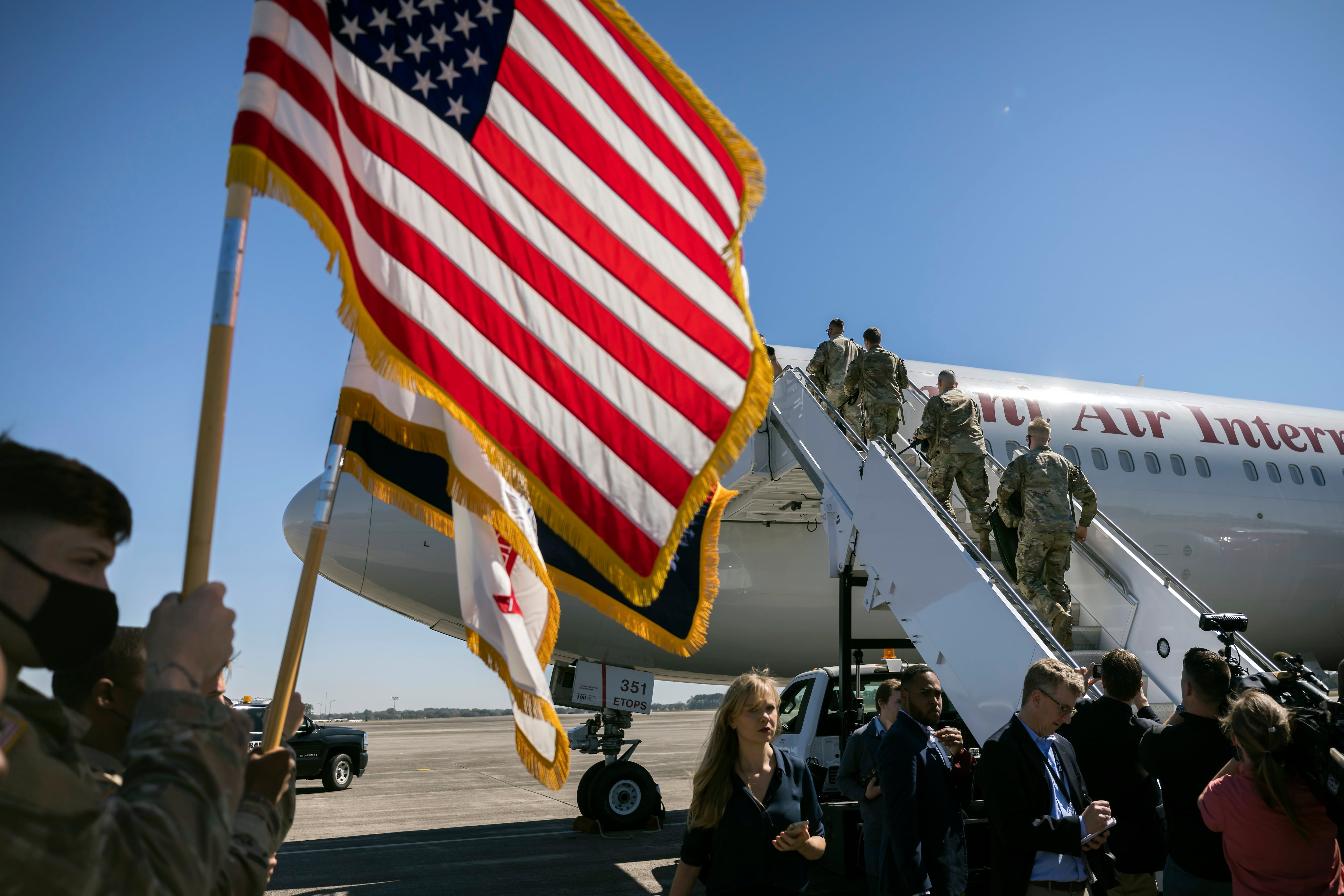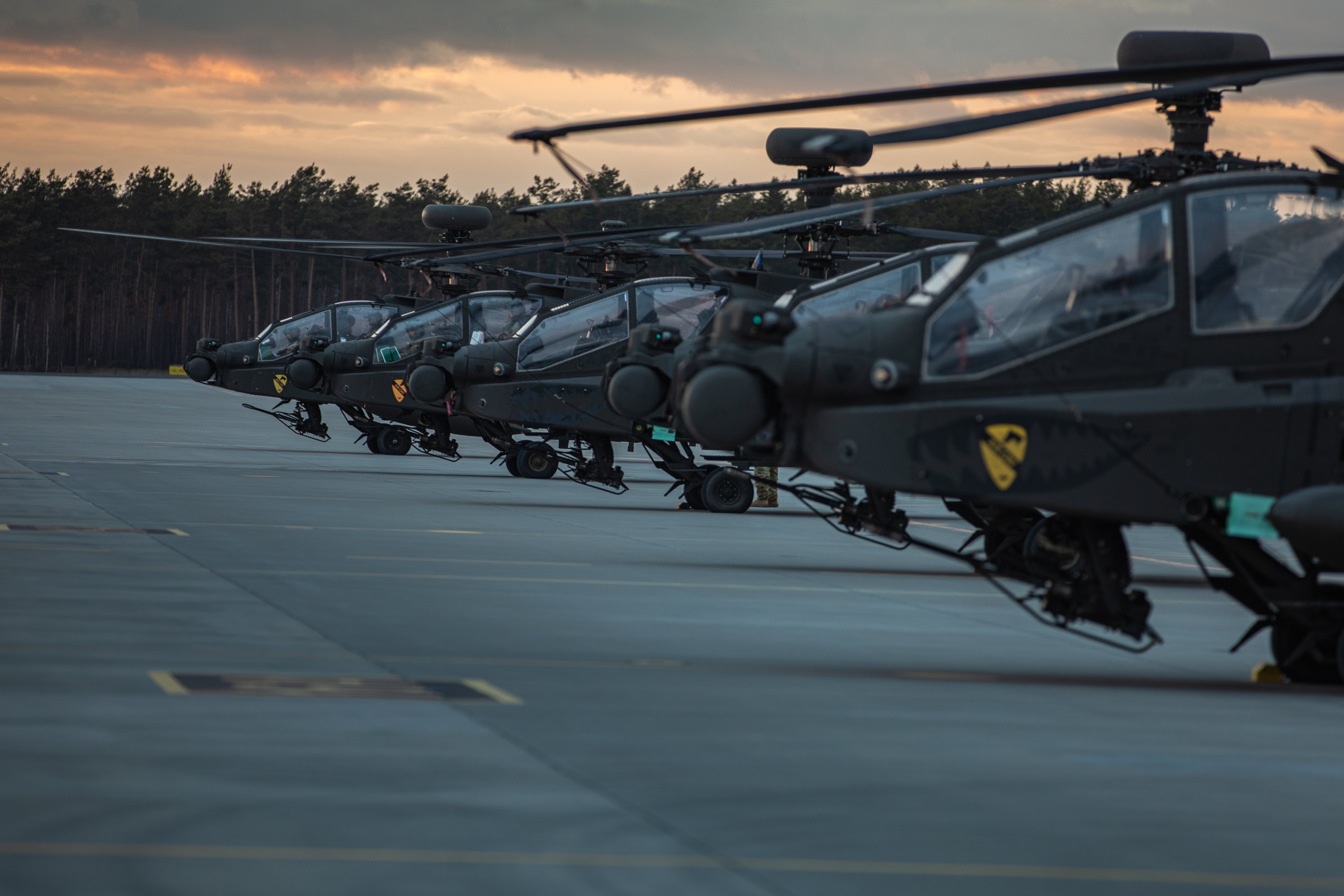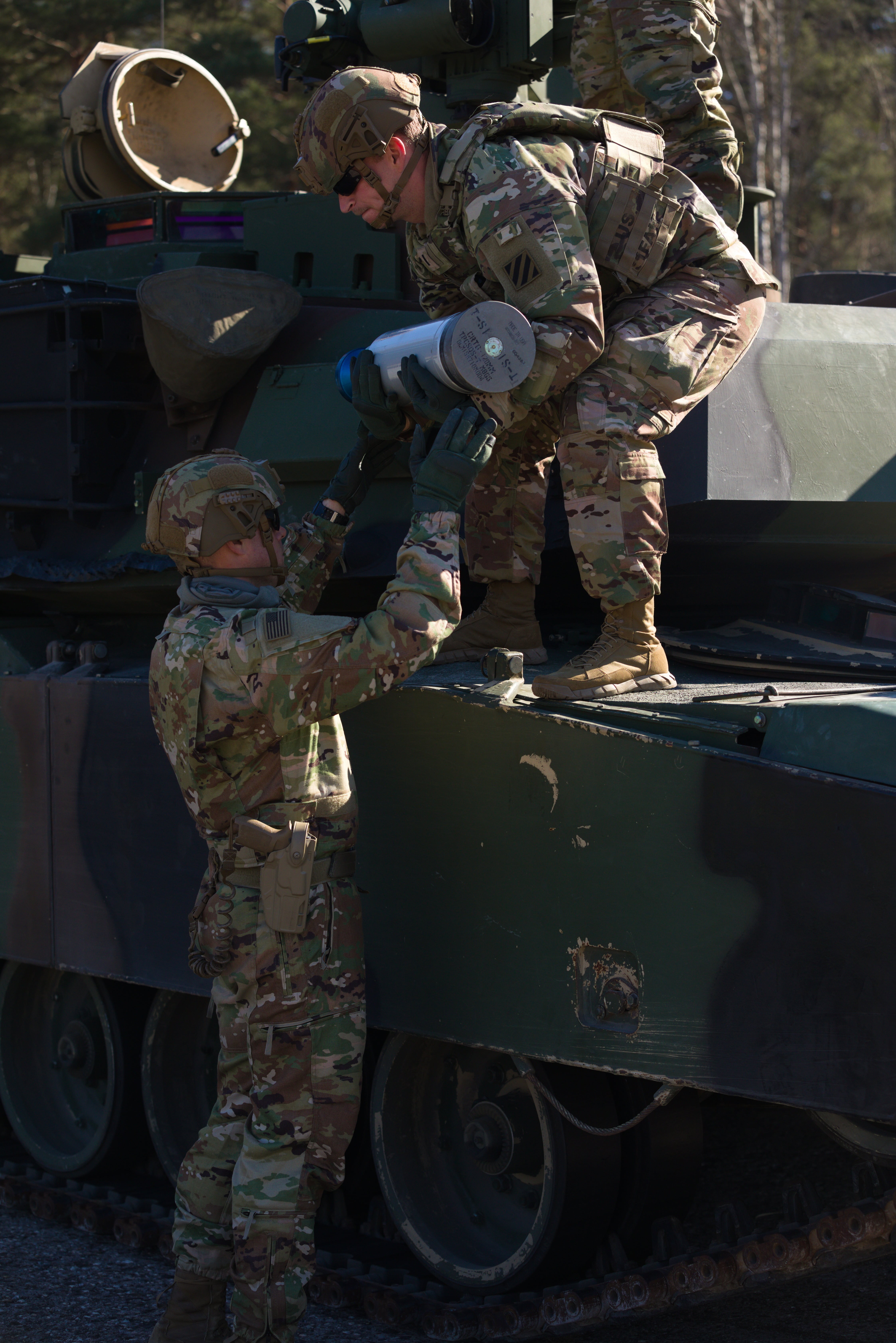FORT BELVOIR, Va. — The ease with which U.S. Army units have flowed into Europe over the past two weeks in response to the Russian invasion of Ukraine is owed to planning, unit standups and forward-thinking logistics conducted in recent years, the Army’s top officer said Tuesday.
Planning, staging, new units and a re-focus on Europe have allowed U.S. troops to “set the theater,” Army Chief of Staff Gen. James McConville told Army Times following his remarks early Tuesday at an Association of the U.S. Army event at the service’s national museum.
“It’s incredibly important that we have a theater command there, the fact that we have structure in place, the fact that we have Army pre-positioned stocks,” McConville said. “We have strong allies and partners and they’re willing to accept our forces or allowed us to respond the way we did.”
RELATED

After two decades of small wars in Afghanistan, Iraq and elsewhere, the Army began re-positioning and evaluating its footprint and capabilities in Europe. The moves reversed the trend of drastic drawdowns on the continent since the fall of the Soviet Union.
“What we’re seeing right now is a return on the investments made in our alliances and partnerships,” McConville said.
For all of the planning and positioning, the four-star acknowledged the changing conditions on the ground — there is a different threat in Europe now than what many saw even 18 months ago, he said.
But he was encouraged by recent actions from allies and partners.
“NATO has come together with strength,” he said. “We see countries change their whole philosophy, their whole strategy in a couple of days.”
Germany has pledged drastic changes to defense spending, as NATO members ship weapons directly to Ukrainians, something uncommon in some past NATO actions.
There could even be moves to permanently station more forces in Europe, a move away from heel-to-toe rotational deployments that have been in practice for decades.
“[But] that’s going to be a policy decision,” McConville said. “We’ll provide options. We do have permanent and rotation forces, we have the dynamic employment of forces, all the menu-type items.”
A significant move in early 2020 was the re-activation of V Corps, which included 635 soldiers positioned at Fort Knox, Kentucky, along with another 200 personnel rotating to Europe.
In his remarks to an audience of about 200 attendees, primarily Army veterans, defense industry and press, McConville rattled off a list of units that have deployed to Europe, many falling in on pre-positioned stocks of weapons and vehicles.
- 173rd Airborne Brigade’s 2nd Battalion, 503rd Infantry Regiment, out of Italy.
- About 4,700 paratroopers with the 82nd Airborne Division, out of Fort Bragg, North Carolina.
- Dozens of Army AH-64 Apache helicopters arriving in Poland and other Baltic states.
- Roughly 1,250 Stryker squadron troops repositioned from Rose Barracks, in Germany, to Romania, Hungary and Bulgaria.
- Approximately 3,800 soldiers from 1st Armored Brigade Combat Team, 3rd Infantry Division, out of Fort Stewart, Georgia.
In a not-so-veiled jab at Russia’s logistical stumbles early in the Ukraine invasion, McConville noted the essential role that supply lines have played to allow for so many American units to arrive ready for their missions.
“If you don’t have gas, ammo, parts, then those weapons just become paperweights,” he said. “They sit on the side of the road and you can’t fight them.”

McConville also tipped his hat to Gen. Gustave Perna, who retired last year but ended his Army career heading U.S. Army Materiel Command. He reworked the Army’s pre-positioned stocks and coordinated major planning for pairing those stocks with units rotating to the continent.
The chief said Perna and his team’s work elevated the Army to, “an incredible level of readiness.”
The decades-old V Corps was deactivated back in 2013. At the time, the Army’s forces in Europe were transforming into more agile units built around a cavalry brigade equipped with highly mobile Stryker vehicles and an airborne infantry brigade. But the service reversed course seven years later.
Shortly after V Corps’ reactivation in early 2020, the service planned a division-sized Defender Europe exercise with allies and partners. That exercise was severely curtailed due to the outbreak of the global COVID-19 pandemic.
About a year later, in early 2021, the Army sent two newly formed units to Europe, a Multidomain Task Force and a Theater Fires Command.
The two units contained only about 500 soldiers. But they pack capabilities that allow them to punch above their weight class. Officially activated in September 2021, the MDTF in Europe was a tailored version of another MDTF first stood up in the Pacific theater.
The concept merges sensing, precision long-range fires and non-kinetic capabilities, such as electronic warfare, cyber and space assets. All of these are aimed at converging fires throughout a linked network to provide the right shooting platform to strike the right target rapidly.
In a release at the time, Gen. Chris Cavoli, head of U.S. Army Europe and Africa, said the MDTF would hold field artillery, air and missile defense, intelligence, cyber, EW, space, aviation and brigade support elements. The general noted that the theater fires command would “improve readiness and multi-national interoperability by integrating joint and multi-national fires.”
The recent unit deployments showed a variety of readiness applications, McConville said.

To underscore how rapid the deployments were in recent weeks, McConville related how he had planned to visit the 1st ABCT, 3rd ID, at Fort Stewart, Georgia, before it deployed.
“We gave them a week to deploy,” McConville said. “I went down there to see them and they were already gone.”
And on Monday, the Pentagon announced 300 more soldiers from an ordnance company and maintenance company out of Fort Bragg and Fort Stewart, respectively, will deploy to support 1st ABCT, 3rd ID.
McConville also gave a shout out, by name, to two units not only for this deployment but their work in recent years on short notice — the 82nd Airborne Division and the Minnesota Army National Guard’s 34th Infantry Division.
The 34th ID responded to civil unrest in their state in the wake of Black Lives Matter protests in 2020; they activated for the COVID-19 pandemic the same year; and they deployed to Hamid Karzai International Airport for the 2021 Afghanistan evacuation. The unit was also the first to conduct a National Training Center rotation at Fort Irwin, California, during the pandemic.
The 82nd Airborne Division, which is assigned the Global Response Force mission, was also activated at least four times with little-to-no notice since McConville took his post as chief of staff less than three years ago.
The division got the call on New Year’s Eve in 2019 for U.S. embassy support in Iraq, response to Washington D.C. for the U.S. Capitol attack in early 2021, and the Afghanistan evacuation.
“And now they’re in Europe,” McConville said.
Todd South has written about crime, courts, government and the military for multiple publications since 2004 and was named a 2014 Pulitzer finalist for a co-written project on witness intimidation. Todd is a Marine veteran of the Iraq War.
